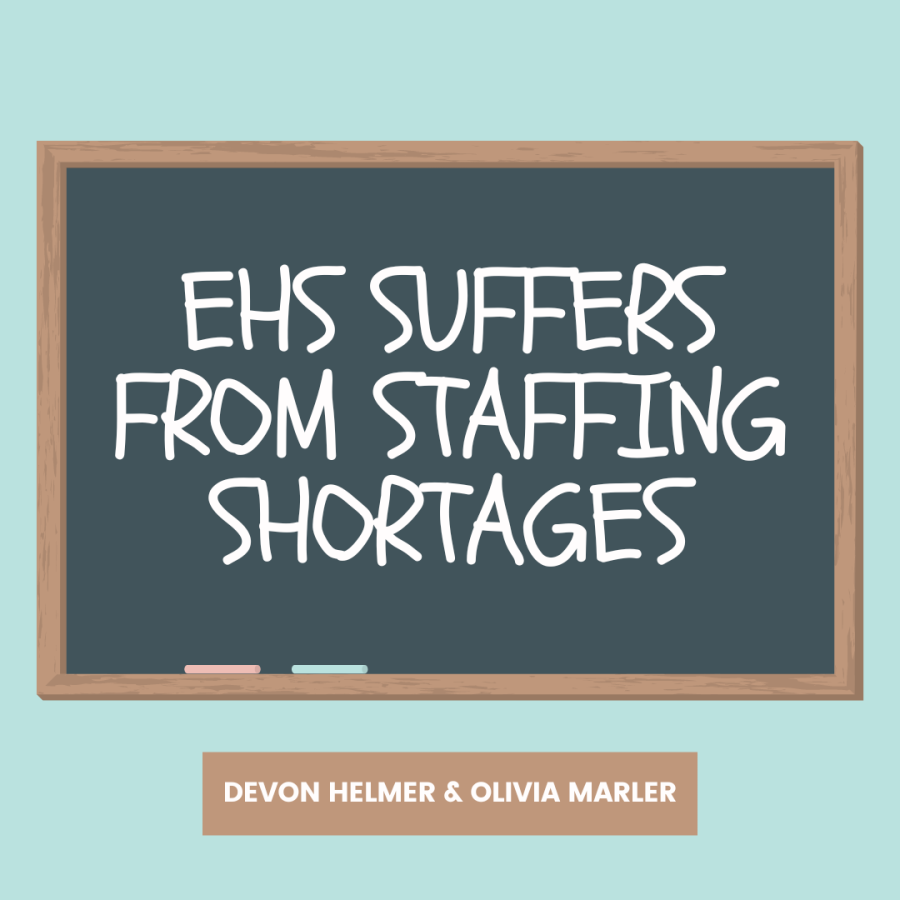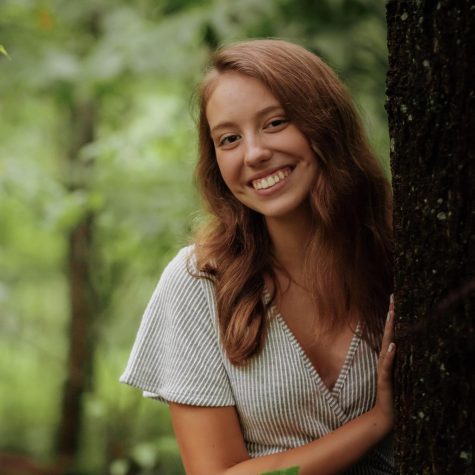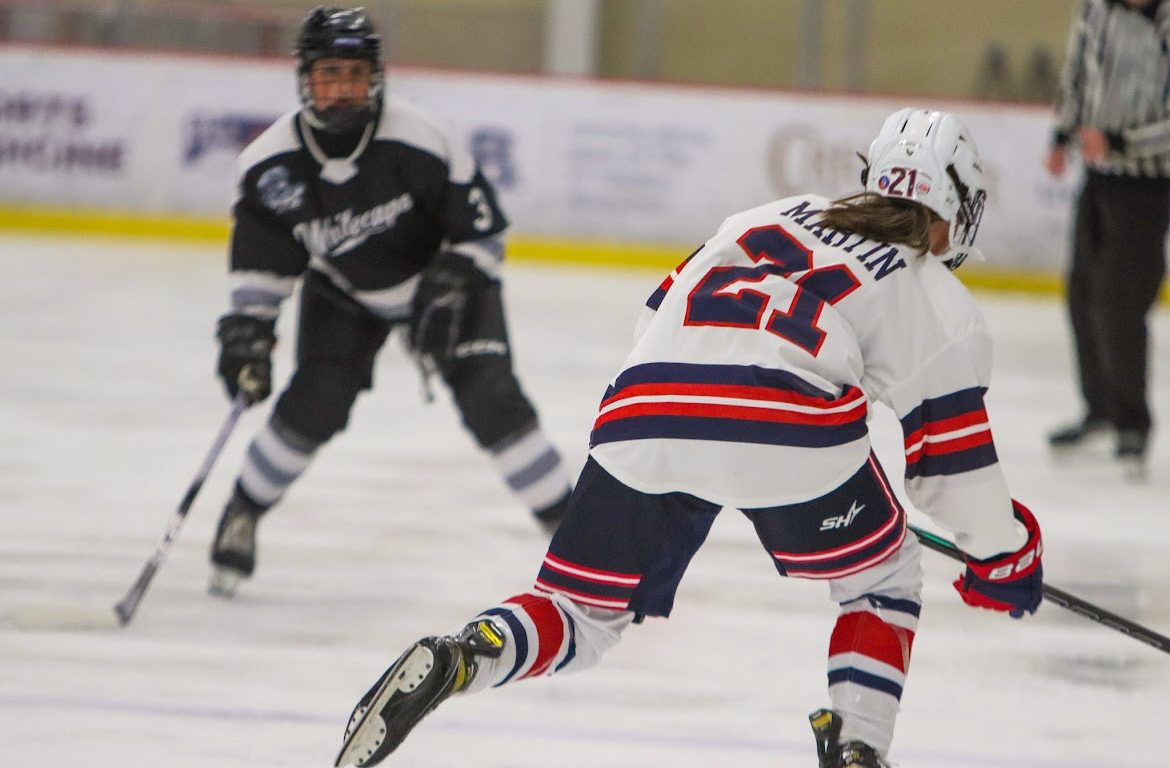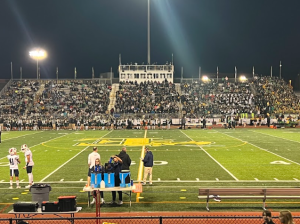EHS suffers from staffing shortages
Jan 17, 2022
This previously ran in our December 2021 print issue.
In recent months, staffing shortages have found themselves monopolizing nearly every industry and business, large or small, across the nation. Emmaus High School is no exception to this statement.
This year, more than ever, finding coverage for every teacher-absence in the building has proved itself to be a tremendous challenge. In addition to lack of availability among substitute teachers, EHS has also struggled with finding people to fill necessary support staff positions within the building.
According to the East Penn School District’s Human Resources department, in the month of November alone, Emmaus High School experienced 248 teacher absences. Out of these absences, 183 were able to be covered by a substitute teacher or support staff member; leaving 65 absence positions unfilled.
Emmaus High School administrators accredited this shortage of available subs to a multitude of reasons. Many substitute teachers have retired from subbing or re-evaluated their career paths when COVID-19 shut down the district, due to the fear of getting sick when present in the building. Other reasons include the uncertainty of child care for stay-at-home parents who only work a couple days a week.
Currently in Emmaus High School, 15 support staff positions remain unfilled. The shortage includes six health room nurses, six instructional assistants, and three staff assistants.
Dr. Kate Kieres, Emmaus High School principal, attributes these gaps in positions to a lack of incentive in these positions.
“Support staff is most dire; in terms of contracted professional teaching positions, we struggle to fill support staff positions: study hall aides, instructional assistants, hall monitor, and office positions,” Kieres said.
With the competition from outside stores and restaurants in the Emmaus community, it can be hard to find people who want to work in the school building every day. Outside businesses have been raising wages and offering sign-on bonuses, hoping to attract more interest to their open positions; these offers are sometimes hard for the school district to match.
For substitute teachers, this means more opportunities to work. Teachers, like substitute Sharon Collins, share their experience with this.
“I’ve only been subbing for four years. I taught for 50 [years] in several different states,” Collins said. “There are definitely more jobs this year; I get to pick and choose what I do.”
With the opportunity to become more selective in accepting jobs, comes the chance to cover more subject areas; substitute teacher Dan Swenson echoes this experience.
“Subbing this year has been an amazing experience,” Swenson said. “Being able to be in all types of classrooms and meet students across a broad spectrum has been very cool.”
According to an EdWeek Research Center survey, over 75% of district leaders claim that their district is at least moderately understaffed.
“We have 175 teachers. It wouldn’t be unusual on a day to have 10 or 15 people out; they can take off for illness, emergency reasons, personal days, [and] conferences, if they are approved. I wouldn’t say that we have more people absent than ever, just fewer people to fill those roles,” Kieres said.
Kieres described that, when a teacher is absent, they have a specific protocol in place, beginning with utilizing the available subs. After all of the accessible subs have been used, teachers who have coverage duty during the period that coverage is needed for fill in, the number of teachers in this position being few. If at this point, classrooms still need coverage, they then look to support staff to fill in.
A hall monitor or study hall monitor that can be pulled from their assigned place will take attendance and instruct the students in a teacher-less classroom to check Schoology for assignments. Once they exhaust all of the individual people to cover, they check with Mrs. Bower in the library to see if her staff can support one to two classes. From here, the students are then directed to go to the library.
Shamiyah Smith, a sophomore, has been affected by the sub shortage. Twice in one week, her classes were moved to the library.
“I went to class first and then [teacher Stacy Yapsuga] had a [note] posted on the door to go to the library,” Smith said. The class did asynchronous work, she said, but “several students had trouble focusing.”
Similar to Smith, Owen Moyer, a junior, found himself arriving late for his Spanish 4 class when he found out the class got bumped to the library due to an unavailability of substitutes.
“No email from school, no nothing,” Moyer said. “I expected it to be in the classroom, so I ended up being late and then I had to explain it because nobody notified us. My one friend had texted me but that was it.”
Moyer said he would’ve preferred Spanish remained in the classroom so that he could have focused on the work. That particular day, multiple classrooms lacked substitutes, so he saw quite a few friends.
“So I definitely got sidetracked,” Moyer said.
In times like these students need to remain resilient regarding classroom assignments, the same goes for substitute teachers like Dan Wessner.
“My strengths lie in being flexible and adaptable but these past two years have been quite exhausting.” Wessner said.
A class period without an assigned instructor often means lost time for the course, causing the class to fall behind in their learning; Junior Jaleel Scille had to spend School Store 1 in the library doing math homework.
“There’s nothing for us to do” when the class gets moved, Scille said, since the store itself cannot operate. “We can’t do what we need to do.”
When there is no space remaining in the library, and no staff who can cover, the classes are, as a last resort, sent into the auxiliary gym. Three to four classes can typically fit into the auxiliary gym, but the space can only be utilized during first and fourth blocks due to lunches and assigned staffing.
Going forward, it is unclear when staffing issues will correct themselves. For now, Emmaus High School administrators will continue to work towards solving staffing concerns during these unprecedented times.
“It’s a process that doesn’t happen overnight,” Kieres said.













